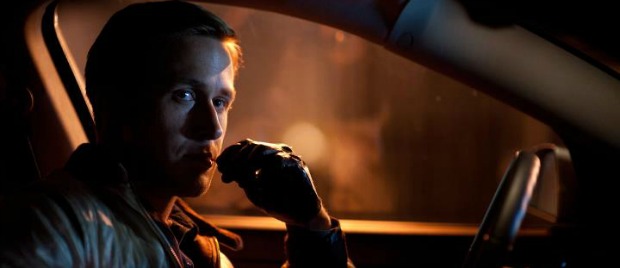Drive
When Nicholas Winding Refn compels you to look, look you shall. This is that rare find: a film that's worth paying to see properly.
Plot summary
A Hollywood stunt driver by day, a loner by nature, moonlights as a top-notch getaway driver-for-hire in the criminal underworld. He finds himself a target for some of LA's most dangerous men after agreeing to aid the husband of his beautiful neighbour Irene. When the job goes dangerously awry, the only way he can keep Irene and her son alive is to do what he does best—Drive!

Audience advisory warning: Drive is too good a film to waste on an average evening’s film viewing. This is beautiful bit of cinema, and it needs to be seen in rarified conditions – up on the big screen, with carefully calibrated surround sound and a respectful audience of fellow film-lovers. This sounds like a lot to ask in these days of downloads and big dumb blockblustering, but bear with me. This is worth the tenner you’ll spend: it’s crammed with great performances, a gnarly plot and instant-classic scenes (wait till you see the one with a hammer in the strip-club…) It’s confident yet retro; a homage to good filmmaking. As the title implies, there are plenty of high octane car chases, but the sum effect is more amped-up Taxi Driver than cheesy Bond installment – when Nicholas Winding Refn compels you to look, look you shall. This is that rare find: a film that’s worth paying to see properly.
Ryan Gosling’s character is not named and is only ever referred to as the Driver, a big hint at his personal isolation. His day jobs – as a mechanic and stunt driver – are overseen by Shannon, (a marvellously grizzled turn from Bryan Cranston, one-time dad in Malcolm in the Middle) a fatherly if avaricious ne’er-do-well, and at night he provides anonymous getaway services to LA’s criminals. You get the sense that money worries and ethical questions don’t bother him, as long as he gets to use his skill as a driver. He is fearsomely taciturn, and his solitary life in early scenes don’t make him look lonely – they make him look menacing. But he is softened when he meets Irene (Mulligan), a young mother whose husband is in jail. Despite both being introverts, Driver and Irene have instant chemistry – and the warmth between the two radiates from the screen. But once the hubby’s back from the clink things get messy: interpersonal tensions, a bag of money and a dollop of doublecrossing result in a bloody test of Driver’s loyalties.
The plot is twistily gripping, but this is only a fraction of Drive‘s attractions. Nicholas Winding Refn’s direction is gorgeously stylised – this doesn’t feel like modern day LA; this feels like a parallel China Town underworld stuck in an eighties twilight zone (an impression that the moody Michael Mann visuals, neon credits and striking synth soundtrack compounds). The pace of cinematography is expertly matched to that of the film – long, slow gliding shots that follow the characters from a distance are preferred over the choppy edits seen in many thrillers. When compared with Drive‘s ice-cool sequences, the fashion for fast action cuts begins to look a little…gauche. Beyond these aesthetic considerations, the main draw is Ryan Gosling – he is superb as Driver. It’s a showcase for Gosling’s chameleon ability; he’s able to look completely quotidian, or mentally unsound, or romantically besotted – with just the slightest shade of facial emphasis. Although Driver’s brutal survival instinct dominates the final third of the action, Gosling’s empathetic ground-work means it’s impossible not to root for him despite the blood-letting that follows.
A word about the violence: it is spectacular. But it’s also handled well on screen, in that it’s rarely visible. Instead, it’s all in the bone-crunching that you hear, or the images you supply with your mind’s eye – and it’s all the more repellent for it. There are some gruesome shots splattered throughout, along with some abrupt on-screen ultra-violence, but the fear and horror that witnessing characters feel are given equal attention. Driver is anti-heroic in his savagery, but his commitment to protecting Irene and his palpable bond with her makes it all feel justified – nay, courageous! Gosling’s performance really is that good, and you need to see it. If you don’t care for his work but love cinema generally, see Drive anyway – this film is brimming with references to the classics referred to above, and even though it borrows frequently from the crime noir archives, it does so with more panache than any other offering you’ll see this year. I would suggest avoiding this if you don’t dig gore or poorly drawn female characters – but given that this gore-avoiding, strong-female-character advocate loved Drive despite these issues, you should probably go and see it too.










COMMENTS